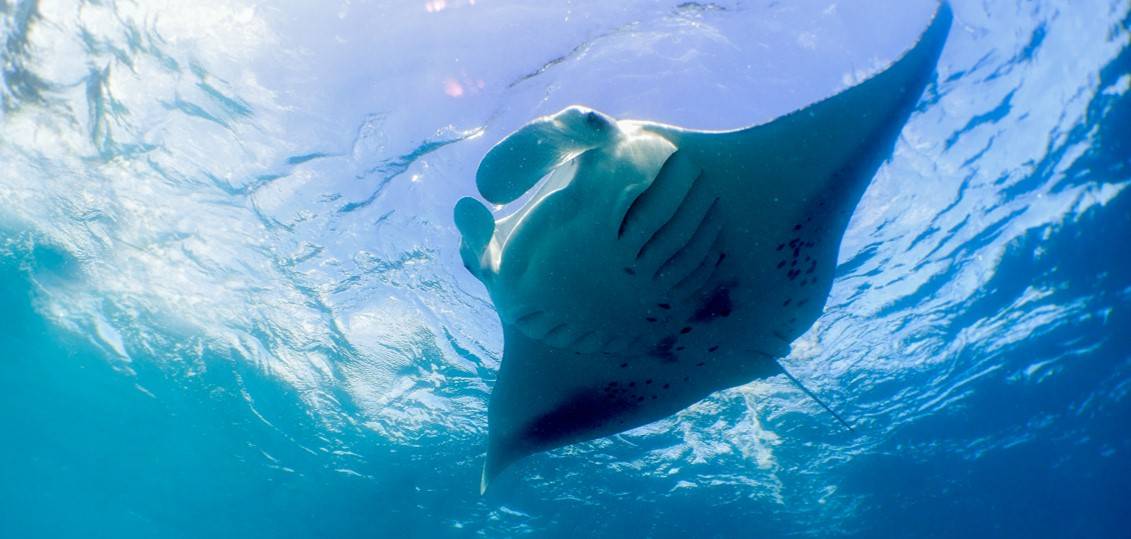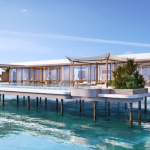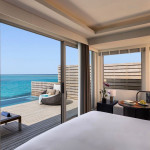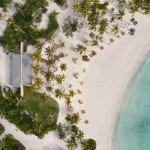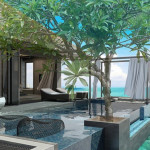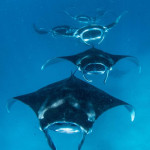HANIFARU BAY RESORTS - Snorkeling at Amilla Fushi Resort and Residences
Article from: Amilla Fushi Newsletter.
Baa Atoll is one of the best places in the world to see manta rays. Nestled on its north-eastern corner, Hanifaru Bay offers the ultimate experience of swimming with mantas in the Maldives. And when it comes to Hanifaru Bay Resorts, you won't find a more perfect spot than Amilla Maldives Resort and Residences. Amilla is only 15 minutes by speedboat from Hanifaru Bay and our team at H.U.B. diving and watersports centre are experts at tracking mantas and whale sharks. Join them for a thrilling snorkelling excursion to Hanifaru Bay - it's the experience of a lifetime. Read on to discover all you need to know about snorkelling with manta rays in the Maldives and Hanifaru Bay.
Manta Season in the Maldives
Mantas typically grace the waters of Baa Atoll UNESCO World Biosphere Reserve and Hanifaru Bay between May and November. Peak times for spotting them during this period is during the full moon and the new moon. With 4,400 individuals recorded, the Maldives has one of the largest manta populations in the world.
Hanifaru Bay
Baa Atoll UNESCO World Biosphere Reserve was created in 2011 in recognition of the incredible biodiversity in Baa Atoll. The jewel in its crown is Hanifaru Bay. Hanifaru Bay is a world-famous snorkelling site, renowned for attracting exceptionally high aggregations of magnificent manta rays and gentle whale sharks. Hanifaru is also a nesting site for green and hawksbill turtles.
As a Marine Protected Area and Biosphere Reserve, the aquatic wildlife here is protected and there are rules in place to conserve the environment and limit the number of visitors allowed in the area at the same time.

Why Hanifaru Bay is World-Famous
Mantas (and sometimes whale sharks) aggregate in Hanifaru Bay in extraordinarily large numbers to feed upon the zooplankton that becomes trapped there during the high tide. At its peak, there can be as many as 100 mantas in Hanifaru Bay at the same time. Watching this 'feeding frenzy' is an incredible spectacle. It has led Hanifaru Bay to becoming an area of scientific research as well as the Maldives' most famous natural attraction. The phenomenon has been celebrated in major publications, including National Geographic.
The Location
Hanifaru Bay is only 15 minutes by speedboat from Amilla Maldives Resort and Residences which means when it comes to Hanifaru Bay Hotels, we are in a prime location for easy access to Hanifaru Bay. There are no hotels in Hanifaru Bay itself because it is a protected wildlife habitat.
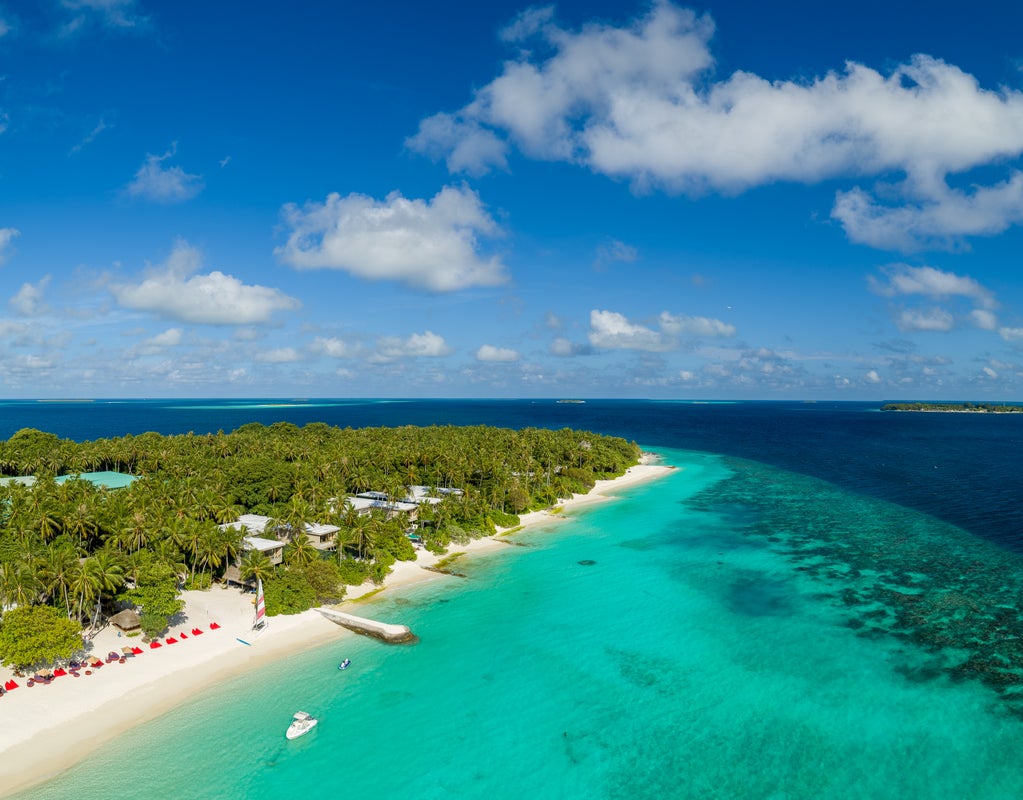
Visiting Hanifaru
Book a manta snorkelling excursion with our resort's on-site H.U.B. Dive centre and with a bit of luck you might be able to see this amazing sight. The team will whisk you away on the short boat journey to Hanifaru Bay where they'll help you spot mantas, and maybe even whale sharks too. As soon as they see them (and as long as it's not too crowded) you can then plunge into the bay with a snorkel and fins to observe the mantas.
Please note that you must never touch mantas because their skin is coated with a special mucus that protects them from bacteria. You should stay 10 metres away from them and try not to splash too much, The same goes for whale sharks. You can find more information on how to behave around manta rays here.
Since mantas and whale sharks are wild creatures, we can never guarantee a sighting, but our team are experts at spotting them and keep tabs on all the recent sightings, so will do their very best to ensure you have this once-in-a-lifetime experience.
The Science Bit
Hanifaru Bay has a unique dynamic water circulation system due to the funnel-like reef shape – it's about 1,300m long and 600m wide at the narrowest point. During the north-western monsoon (May-Nov) huge quantities of zooplankton become trapped in the horseshoe-shaped bay, creating a kind of zooplankton 'soup', which attracts large numbers of zooplankton-loving megafauna (mantas and whale sharks).
More About Mantas and Whale Sharks
Both mantas and whale sharks are filter-feeders, meaning they live on zooplankton. Often referred to as 'gentle giants', mantas can have a wingspan of up to 3.3m and they must consume 12% of their body weight in zooplankton per week. Whale sharks are technically not sharks - in fact, they're classed as the largest fish in the ocean. They can grow up to 14m long. Both mantas and whale sharks are generally elusive creatures and are vulnerable to extinction, which makes Baa Atoll – and Hanifaru Bay - even more special.
